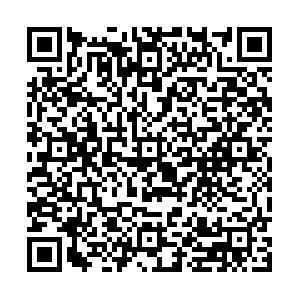Clinical features and prognosis of drug-induced liver injury: An analysis of 95 cases
-
摘要:
目的对现有的药物性肝损伤(DILI)临床资料进行分析总结,以了解其临床特点及预后。方法采用回顾性调查方法,收集2010年2月-2016年2月西安医学院第一附属医院收治的95例DILI患者临床资料,分析患者性别、年龄、用药史、基础疾病、临床表现、实验室及影像学检查、治疗情况及转归等。采用logistic回归分析影响预后的危险因素。结果引起DILI的药物所治疗的基础疾病中,呼吸系统疾病占首位,占25.26%(24/95),其中结核占23.16%(22/95)。导致DILI的药物中,最常见的为中药类,占44.21%(42/95),其次为抗结核药物,占22.11%(21/95)。从服药至产生肝损伤的时间以1530 d最常见。DILI的症状中以纳差最为常见,最常出现的阳性体征是黄疸。DILI的实验室肝功能检查以ALT升高最为明显。最常见的DILI类型是急性肝细胞损伤型。DILI患者大多数预后良好,经停药及治疗后,治疗有效者(包括治愈和好转)占95.79%(91/95)。年龄[比值比(OR)=0.054,95%可信区间(95%CI):0.0020.076...
Abstract:Objective To analyze and summarize the clinical data of drug-induced liver injury (DILI) , and to investigate the clinical features and prognosis of DILI. Methods A retrospective analysis was performed for the clinical data of 95 patients with DILI who were admitted to The First Affiliated Hospital of Xi'an Medical University from February 2010 to February 2016, including sex, age, medication history, underlying diseases, clinical manifestation, laboratory and imaging findings, treatment, and prognosis. A logistic regression analysis was used to investigate the influencing factors for prognosis. Results Respiratory system diseases ranked first among the underlying diseases treated by drugs that caused DILI and accounted for 25. 26% (24/95) , and of all patients, 23. 16% (22/95) had tuberculosis. Among the drugs that caused DILI, traditional Chinese medicine ranked first and accounted for 44. 21% (42/95) , followed by antitubercular agents which accounted for 22. 11% (21/95) . DILI often occurred within 15-30 days of medication. Poor appetite was the most common symptom of DILI, and jaundice was the most common positive sign. Elevated alanine aminotransferase was the most common laboratory result of DILI.Acute hepatocellular injury type was the most common type of DILI. Most DILI patients had good prognosis, and patients with response to treatment accounted for 95. 79% (91/95) , including those who were improved or cured. Age (odds ratio [OR]= 0. 054, 95% confidence interval (CI) : 0. 002-0. 076, P = 0. 037) , alkaline phosphatase (OR = 0. 004, 95% CI: 0. 001-0. 006, P = 0. 043) , total bilirubin (OR = 0. 028, 95% CI: 0. 001-0. 039, P = 0. 035) , and direct bilirubin (OR = 0. 008, 95% CI: 0. 001-0. 014, P = 0. 036) were independent risk factors for prognosis. Conclusion DILI does not have specific clinical manifestations and can easily be missed or misdiagnosed. Clinicians should use drugs rationally, monitor the presence of hepatotoxicity, and strengthen the public health education on safe medication.
-
Key words:
- drug-induced liver injury /
- disease attributes /
- prognosis
-
[1]BJRNSSON ES.Hepatotoxicity by drugs:The most common implicated agents[J].Int J Mol Sci, 2016, 17 (2) :224. [2]Drug-induced Liver Disease Study Group, Chinese Society of Hepatology, Chinese Medical Association.Guidelines for the management of drug-induced liver injury[J].J Clin Hepatol, 2015, 31 (11) :1752-1769. (in Chinese) 中华医学会肝病学分会药物性肝病学组.药物性肝损伤诊治指南[J].临床肝胆病杂志, 2015, 31 (11) :1752-1769. [3]DEVARBHAVI H, PATIL M, REDDY VV, et al.Drug-induced acute liver failure in children and adults:Results of a single-centre study of 128 patients[J].Liver Int, 2017.[Epub ahead of print] [4]TESCHKE R, FRENZEL C, WOLFF A, et al.Drug induced liver injury:Accuracy of diagnosis in published reports[J].Ann Hepatol, 2014, 13 (2) :248-255. [5]CHALASANI NP, HAYASHIL PH, BONKOVSKY HL, et al.ACG Clinical Guideline:The diagnosis and management of idiosyncratic drug-induced liver injury[J].Am J Gastroenterol, 2014, 109 (7) :950-966. [6]SGRO C, CLINARD F, OUAZIR K, et al.Incidence of drug-induced hepatic injuries:A French population-based study[J].Hepatology, 2002, 36 (2) :451-455. [7]BJRNSSON ES, BERGMANN OM, BJRNSSON HK, et al.Incidence, presentation, and outcomes in patients with drug-induced liver injury in the general population of Iceland[J].Gastroenterology, 2013, 144 (7) :1419-1425. [8]CHALASANI N, BONKOVSKY HL, FONTANA R, et al.Features and outcomes of 899 patients with drug-induced liver injury:The DILIN prospective study[J].Gastroenterology, 2015, 148 (7) :1340-1352. [9]HU Q, LIU W, SHAO H.Research progress of pharmacotherapy drug-induced liver injury[J].Chin J Clin Pharmacol Ther, 2016, 21 (2) :231-236. (in Chinese) 胡琴, 刘维, 邵宏.药物性肝损伤的药物治疗研究进展[J].中国临床药理学与治疗学, 2016, 21 (2) :231-236. [10]SUTTI S, TACKE F.Liver inflammation and regeneration in drug-induced liver injury:Sex matters[J].Clin Sci (Lond) , 2018, 132 (5) :609-613. [11]AMACHER DE.Female gender as a susceptibility factor for druginduced liver injury[J].Hum Exp Toxicol, 2014, 33 (9) :928-939. [12]LUCENA MI, ANDRADE RJ, KAPLOWITZ N, et al.Phenotypic characterization of idiosyncratic drug-induced liver injury:The influence of age and sex[J].Hepatology, 2009, 49 (6) :2001-2009. [13]ZHOU SM, JIA J.696 cases of drug-induced liver injury[J].Drug Eval, 2007, 4 (6) :442-443. (in Chinese) 周世明, 贾杰.696例药物性肝损害药物的临床分析[J].药品评价, 2007, 4 (6) :442-443. [14]LEISE MD, POTERUCHA JJ, TALWALKAR JA.Drug-induced liver injury[J].Mayo Clin Proc, 2014, 89 (1) :95-106. [15]ZHOU Y, YANG L, LIAO Z, et al.Epidemiology of drug-induced liver injury in China:A systematic analysis of the Chinese literature including 21, 789 patients[J].Eur J Gastroenterol Hepatol, 2013, 25 (7) :825-829. [16]ZHU Y, NIU M, CHEN J, et al.Hepatobiliary and pancreatic:Comparison between Chinese herbal medicine and Western medicine-induced liver injury of 1985 patients[J].J Gastroenterol Hepatol, 2016, 31 (8) :1476-1482. [17]LIU CH, ZHU CW.Epidemic features, major causes, and diagnostic evaluation of herb-induced liver injury[J].J Clin Hepatol, 2017, 33 (5) :829-832. (in Chinese) 刘成海, 朱春雾.中草药相关药物性肝损伤的流行特点、主要原因与诊断评估[J].临床肝胆病杂志, 2017, 33 (5) :829-832. [18]STICKEL F, SHOUVAL D.Hepatotoxicity of herbal and dietary supplements:An update[J].Arch Toxicol, 2015, 89 (6) :851-865. [19]TU C, JIANG BQ, ZHAO YL, et al.Comparison of processed and crude Polygoni Multiflori Radix induced rat liver injury and screening for sensitive indicators[J].Chin J Chin Mater Med, 2015, 40 (4) :654-660. (in Chinese) 涂灿, 蒋冰倩, 赵艳玲, 等.何首乌炮制前后对大鼠肝脏的损伤比较及敏感指标筛选[J].中国中药杂志, 2015, 40 (4) :654-660. [20]CHEN M, SUZUKI A, BORLAK J, et al.Drug-induced liver injury:Interactions between drug properties and host factors[J].J Hepatol, 2015, 63 (2) :503-514. [21]HUANG YS.Recent progress in genetic variation and risk of antituberculosis drug-induced liver injury[J].J Chin Med Assoc, 2014, 77 (4) :169-173. [22]DAS S, BEHERA SK, XAVIER AS.Agreement among different scales for causality assessment in drug-induced liver injury[J].Clin Drug Investig, 2018, 38 (3) :211-218. [23]PETROS Z, KISHIKAWA J, MAKONNEN E, et al.HLA-B*57allele is associated with concomitant anti-tuberculosis and antiretroviral drugs induced liver toxicity in Ethiopians[J].Front Pharmacol, 2017, 8:90. [24]RACHI C, PIPALIYA N, PATEL R, et al.Drug induced liver injury at a tertiary hospital in India:Etiology, clinical features and predictors of mortality[J].Ann Hepatol, 2017, 16 (3) :442-450. [25]MEDINA-CALIZ I, ROBLES-DIAZ M, GARCIA-MUOZ B, et al.Definition and risk factors for chronicity following acute idiosyncratic drug-induced liver injury[J].J Hepatol, 2016, 65 (3) :532-542. -

 本文二维码
本文二维码
计量
- 文章访问数: 2084
- HTML全文浏览量: 42
- PDF下载量: 378
- 被引次数: 0


 PDF下载 ( 1559 KB)
PDF下载 ( 1559 KB)

 下载:
下载:

